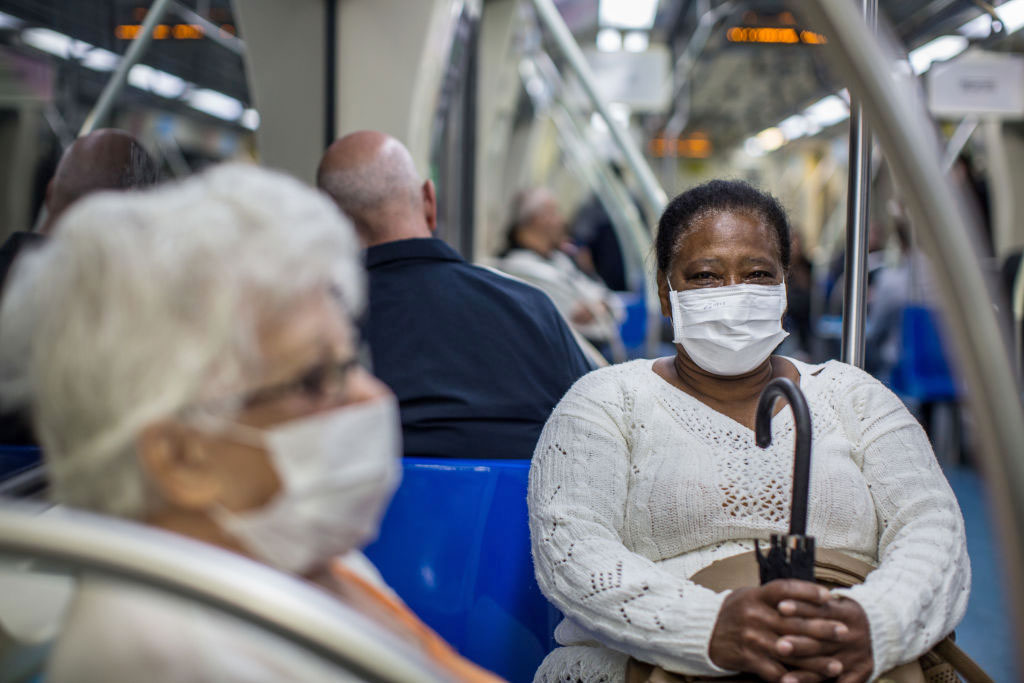RIO DE JANEIRO, BRAZIL – There is no single picture of the coronavirus pandemic in Brazil. It is spreading at different speeds across the regions of such a large and diverse country – and the general data give little guidance on the gravity of the situation. For weeks, data on Brazil has been at a worrying level. The curve of new deaths has stabilized, but over 1,000 people die every day from Covid-19.
A closer look at the diverse scenarios among regions is required to understand why Brazil maintains such a high plateau, unlike other countries, which saw a peak in deaths and then a drop in the curve. While the virus seems to be slowing down in some Northern and Northeastern states (the first to see their healthcare systems collapse with the epidemic), it is gaining speed in states that were spared the most at the start of the crisis. Infections now grow particularly in parts of the Southeast, South, and Midwest, such as Mato Grosso and Rio Grande do Sul, in a scenario in which the Ministry of Health’s management, under interim command since May, is criticized and there is a shortage of basic drugs for hospitalization.
Brazil currently experiences several epidemics, with outbreaks, waves, and very different variations between regions, states, and even municipalities. To demonstrate how the epidemic is progressing, EL PAÍS analyzed the rolling average of new deaths reported daily by the states, a resource experts deem more accurate to provide a more precise picture of the intensity of the pandemic in these places.
The Health Intelligence Laboratory (LIS) of the Faculty of Medicine of the University of Ribeirão Preto was used to monitor the results of the past seven days and divide them by seven, a resource to mitigate the differences in new deaths reported, which typically drop over weekends when lab staff and typists are working on call.
Brazil on a steep curve
In recent weeks, the coronavirus has been growing more rapidly in Southern, Midwestern, and some Southeastern states. These locations seemed to have been spared somewhat earlier in the pandemic, but the decisions of local managers about their policies for managing the epidemic and the typical winter increase in respiratory diseases in these regions – which began in late June – are some of the variables driving growth.
“The rates in this part of the country are growing quite acutely,” points out researcher Domingos Alves, head of LIS. The growing spread of contagion in these regions has pushed up the records of new infections recorded nationwide over the past week.
Minas Gerais is an instance of Brazil’s steep curve. The state had been presenting a relatively flat curve in the first months of the health crisis. Authorities liked to boast about keeping the epidemic under control – until May, when the strategy was to invest in ICUs and repress testing. With little testing, a sense of control was created. This differed from the rate of hospitalizations for severe acute respiratory syndrome, a complication of Covid-19, and other diseases.
However, as of June, the state saw deaths by Covid-19 explode. The total number of deaths doubled over the past month – there were 1,007 fatalities recorded up to July 1st, and on July 23rd this cumulative total reached 2,238. The rolling average curve of new deaths in Minas Gerais continues to rise, a picture of the complications of the Minas Gerais epidemic.
In addition to Minas Gerais, the epidemic has worsened in recent weeks in states such as Santa Catarina, Mato Grosso, Paraná, and Rio Grande do Sul. The latter’s capital Porto Alegre, for instance, is facing the problem of overcrowding of its intensive care beds, where patients with severe Covid-19 symptoms are treated. At least ten people with the disease were in emergency rooms waiting for a bed in the capital last Thursday, July 23rd.
Brazil that overcame the healthcare collapse
The exhaustion of hospital care -or the collapse of the healthcare system- has been felt in Northern and Northeastern states for months. These regions suffered the impacts of the epidemic most severely around the months of April and May. And they have very different curves. The clearest example of this is the Amazon. The state suffered a sharp upsurge in hospitalizations in April. The local healthcare system was exhausted. Intensive care beds for the infected were lacking and videos of bodies in hospital corridors went viral.
The Covid-19 death curve peaked in late May and began to decline in June. In recent weeks it has shown stability with an average record of between 15 and 20 daily deaths. This downward trend can also be observed in states such as Ceará and Rio de Janeiro. “There is a downward trend, although the epidemic is not under control. Since the start of the crisis, policies to break the transmission chain have been lacking. I believe the drop is the result of a certain exhaustion of this contagion chain and of the ICU beds that have been cleared”, analyzes Domingos Alves.
Experts point out that claiming that the health crisis is under control is not yet possible even in states that have begun to show evidence of stability or even a drop in deaths by Covid-19. On the one hand, the gradual progress in the quarantine relaxation plans to restart activities may influence a new increase in infections.
Moreover, there has been a change in behavior since July, with the virus slowing down in the capital cities and growing in inland cities, which traditionally rely on the metropolitan hospital structure. This should have an impact on state statistics and the ability to assist the infected, even if the overall situation seems stable.

The illusion of stability in São Paulo
São Paulo shows a curve in the rolling average of deaths following a behavior similar to the national trend. The state was the gateway to the novel coronavirus in Brazil in February and, since then, it has been the one that accumulates the most cases and deaths in absolute numbers. However, when analyzing the rolling average of new deaths, some stability in records since late June can be observed. Unlike Amazonas, for instance, São Paulo did not show a peak followed by a considerable reduction in deaths.
Like the country, the average of daily reported deaths is high. Over 200 deaths are counted every day in the state, which sees the pandemic pushing ahead through the interior cities. In the capital, a change in data counting methodology has created a limbo in local analysis. “The stability that the state presents is not necessarily good. If you make an even bigger cut and take the epidemic in Ribeirão Preto, Campinas, Barretos and São José do Rio Preto in isolation, you’ll see that the coronavirus there is in full spread,” says Domingos Alves.
Brazil is facing this whole scenario with no Minister of Health since May 15th and with a Ministry that should coordinate the country’s efforts and exploit the potential of the SUS (National Health Service), a target of criticism for the large number of military officers placed in key posts. Over the past week, the interim Minister of Health, General Eduardo Pazuello, visited some states where the epidemic is growing, such as Paraná and Rio Grande do Sul. In Porto Alegre he met with the governor of the state of Rio Grande do Sul, Eduardo Leite, who tested positive for Covid-19; now the health delegation will need to be tested.
In press conferences, Pazuello said he sees a downward trend in the upper part of the country and stability in the lower regions. He credited the rise in cases to the winter season, when the temperature drops in these regions and the spread of respiratory diseases like Covid-19 grows. “The scenario seems under control to me. The contagion curve is climbing, but the efforts to prevent the need for ICU and treatment at an early stage is keeping it under control,” he said.
The risk of a second wave
However, this control is regarded with suspicion by experts. A study by the Imperial College of London shows that the spread of Covid-19 has been uncontrolled in Brazil for over ten weeks, with an infection rate above one. Fiocruz, on the other hand, alerts to the prospect of an early second wave of infections in states that had appeared to have succeeded in considerably reducing the incidence of the disease – and which would be off the seasonality of the disease argued by the Minister.
InfoGripe researchers are monitoring cases of severe acute respiratory syndrome (a complication of Covid-19 and other colds) on a weekly basis. They have observed that these hospitalizations have increased again in Ceará, Maranhão, Rio de Janeiro, and Amapá – places that showed a substantial drop in hospitalizations after peaking.
“It is a trend toward an early second wave because these states did not reach low enough hospitalizations to say that control was in place. But there was a significant drop in these states, with up to 60 percent of cases in relation to the peak. And this is what defines a first wave,” Marcelo Gomes says. The researcher believes this return in the growth of hospitalizations can be related to two factors: the progress of the quarantine relaxation phases and the interiorization process of cases.
This phenomenon is most evident in Amapá, which now shows a steeper curve of new hospitalizations, while the other three states are showing an initial upward trend.
“This upward trend is of great concern. This may lead to a renewed significant bed occupancy from now on, particularly because we have observed that these cases involve a lengthy hospitalization process, which may deplete bed rates,” Marcelo Gomes concludes.
Source: El País


